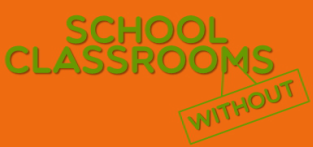The Role of the TeacherThe implementation of the ideas of Constructivism, Project-based learning and Democratic schools requires a new role of the teacher or any adult taking care of the child’s learning.
The teacher takes on a mediational role rather than being an instructor. Teaching "at" students is replaced by assisting them to understand and help one another to understand. The teacher’s role is to be a facilitator, a counselor, a mentor. He or she does not provide ready-made answers but guides the students to find the answers by themselves. For example, instead of direct instruction the teacher will guide the students to find their learning style. A 10-year research program at the University of Technology, Sydney, demonstrated that by helping students to understand their own learning styles, improved comprehension levels and reduced attrition rates were achieved[1]. |
Psychologically our model is based on the following tenets:
In the project-based classroom the teacher: Searches for compelling projects, which are meaningful and relevant to their lives; Motivates: powerfully activates students’ need to know what they’re being taught; Facilitates: creates situations, which inspire students to search for solutions, shows the students how to use tools and equipments; Organizes events for students to publicly present their project; Helps children discover; exposes children to many potentially interesting facets of the world; Arranges a physical environment, which provokes curiosity, encourages children to follow up on the interests stimulated by the environment; Places children in active, creative roles of explorers, hunters, inquirers, designers, performers, etc.; Provides ample scope for individuals to test their learning in new and odd situations. Selects content from basic human activities and makes these activities vivid and exciting; Uses the children's background of experiences and provides a rich variety of new experiences; Involves children in multi-sensory experiences that are natural to them; Asks open-ended questions designed to elicit divergent thinking. |
[1][55 Wilson, Jenny, 2004, Understanding learning styles: implications for design education in the university, University of Technology, Sydney, January.]




